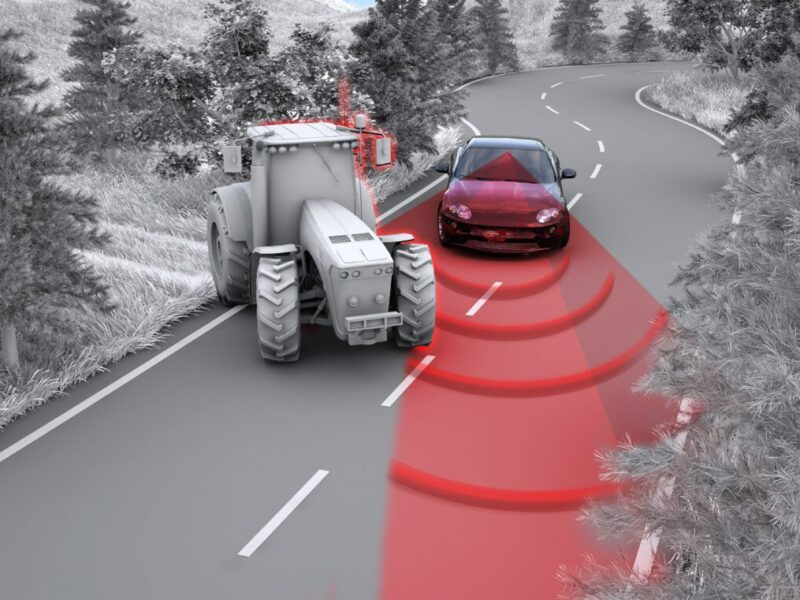
During a presentation at the Hockenheim racetrack near Heidelberg, Germany, TRW showcased the prototype of an Emergency Steering Assist (ESA) system as a building block towards the autonomous car. Processing data from camera and a radar sensor, the system generates a real-time spatial image of the road ahead; if an obstacle (including a pedestrian) is identified and full braking does not promise to stop the vehicle before the impact with the obstacle, the system computes the ideal trajectory around and, if the driver swerves, it adds torque to the steering wheel to follow that trajectory and to stabilize the vehicle. The system, developed along with the Technische Universität of Dortmund, could be ready for production in 2017, the company said.
In contrast to market leaders Bosch and Continental which bet on stereo cameras as main sensors to detect and identify obstacles and other traffic participants, TRW uses a mono camera a along with a proprietary algorithm that compares subsequent images to generate a spatial image; TRW calls this approach "Structure from Motion", SfM. This works with remarkable precision, as TRW demonstrated during the event. The third generation of its camera, S-Cam3, enables the design of a purely camera-based adaptive cruise control (AAC) assistant system – competitors typically utilize a combination of stereo camera and radar or radar alone. In addition, the camera offers sensor functionality for a broad range of assistant systems, including Lane Departure Warning, Advanced High Beam Assistant, Traffic Sign Recognition and Automatic Emergency Brake Assist (EBA) with pedestrian recognition.
Like the camera, the latest generation of TRW’s radar sensor currently under development, the AC1000, is capable of recognizing cyclists and pedestrians. Designed to fit to high-volume applications as well as for partially automated driving functions, the 77GHz radard offers three different aperture angles: The low speed mode with an aperture angle of 70° is suited for narrow streets in crowded environments and pedestrian zones, the city mode with 50° aperture offers a compromise between distance and resolution, and the ACC mode with an aperture angle of 25° works best on motorways with relatively high speed and distances of up to 180m. Thus, OEMs can utilize the sensor for both ACC applications and AEB systems as required by NCAP in the future.
Both radar and camera sensors complement each other. The implementation as separated sensors also allows TRW to react flexibly on potential future changes in Euro NCAP requirements.
Related links and articles:
Advanced safety features will be democratized, says TRW
TRW puts Safety Domain ECU to centre stage of its semi-automated driving concept
Bosch, Conti dominate automotive electronics market
Continental to employ stereo vision for driver assistance systems
 If you enjoyed this article, you will like the following ones: don't miss them by subscribing to :
eeNews on Google News
If you enjoyed this article, you will like the following ones: don't miss them by subscribing to :
eeNews on Google News




